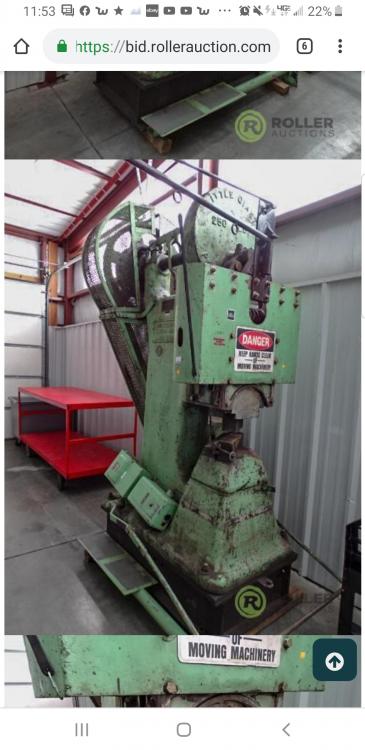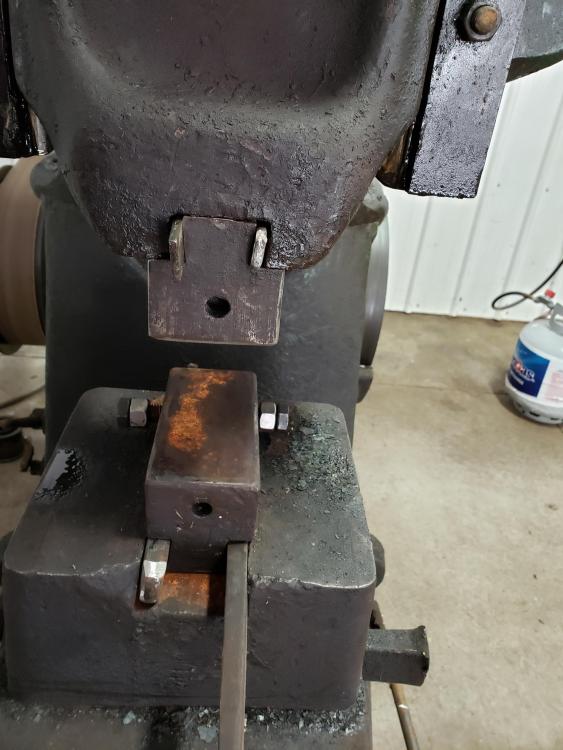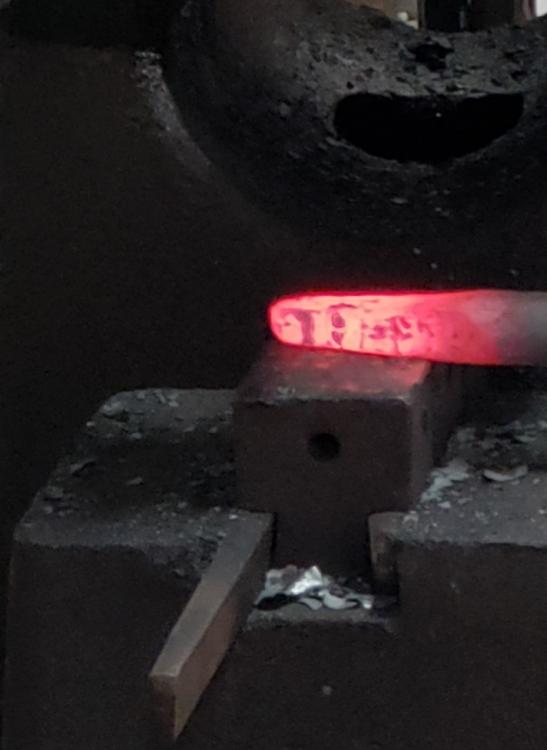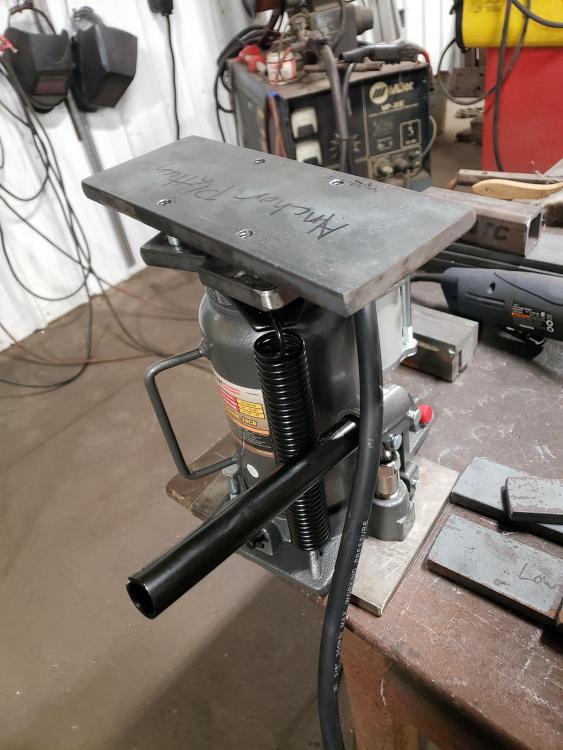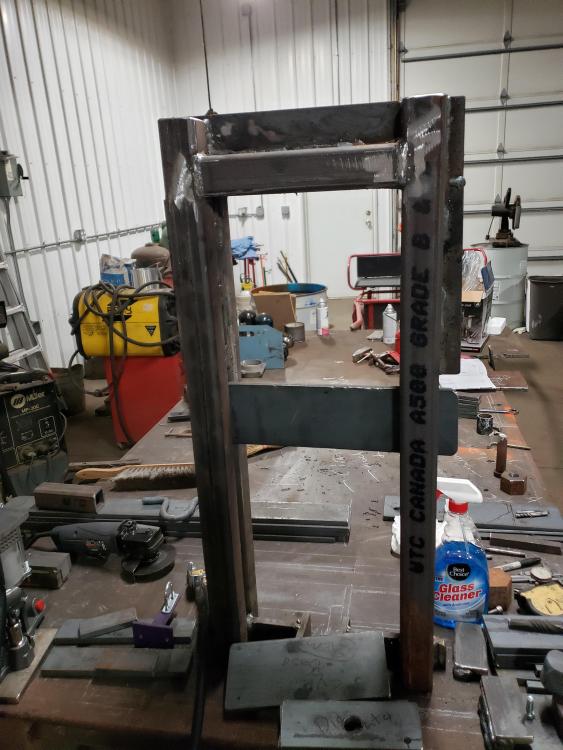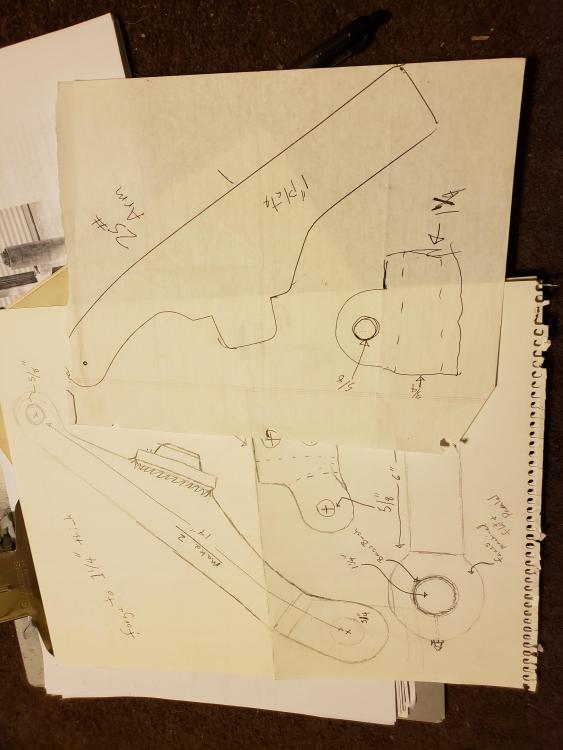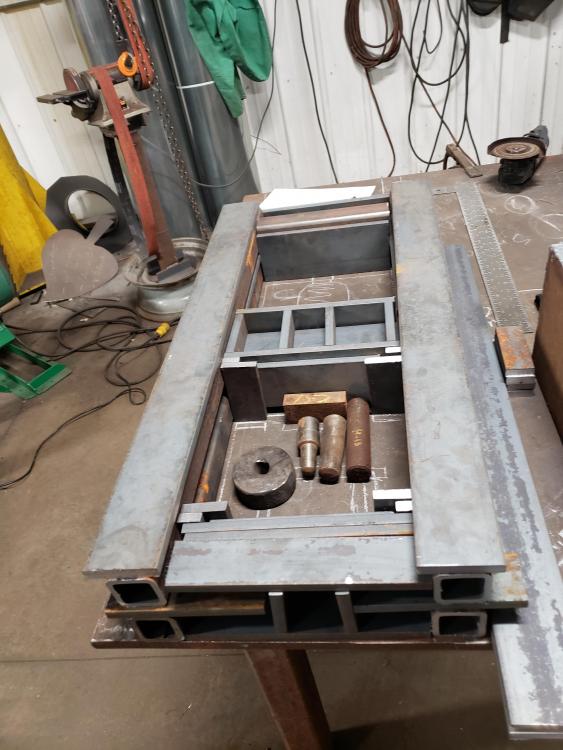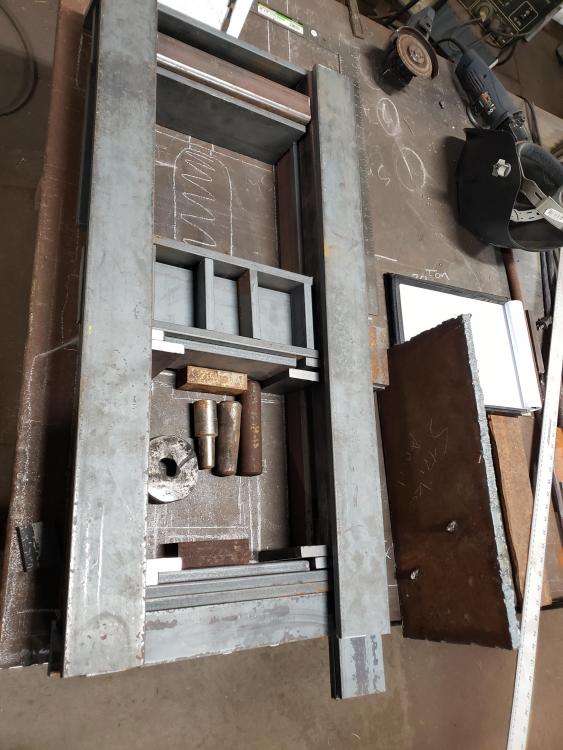-
Posts
469 -
Joined
-
Last visited
Content Type
Profiles
Forums
Articles
Gallery
Downloads
Events
Everything posted by jason0012
-
It looks stout as anything. Probably a nmtb taper which is a pain, honestly anything other than r-8 is a pain. That is not reason enough to pass on a machine, oddball tapers can be located, it just causes some aggravation. Three phase is actually pretty easy to work around. More than likely it will have wear in the ways and screws but since it is going into home use it would have to be really bad to be a deal killer. It looks like a good starter mill. I am curious what it is- that photo is pretty rough.
-

old style 250 pound little giant
jason0012 replied to jason0012's topic in Power Hammers, Treadle Hammers, Olivers
-
I have that issue with my top die. I need to thin the dovetail, but have managed for more than 20 years with skinny keys. Use spring steel, heat treat the keys and use a close fitting drift to push them. Keep them reasonably close the length of your dies. Soft keys are evil and the cause of every die I have ever oxygen laced out of a sow block. At this point in my life I dont expect to live long enough to waste my time trying to dig a riveted die out of a hammer ever again. Here is a better veiw. My top die keys are about 3/16" at the thick end. The right key is the thick end. The thin end is a tad under 1/8". These keys were fitted to this hammer in the 90s.
-
A hammer just popped up for sale and my wife says I need it. I will probably have to sell some stuff, but how many hammers is apropriate??? I have two running hammers at the moment, and I have two huge foundations available....
-
Okay, this is not directly a grinder question so it might belong somewhere else, but under grinders was my best guess. Belt grinders chew up a LOT of steel and generate a lot of dust. I would like to minimize the airborne dust as well as the piles on the floor, tables, shelves, ect. I like the booths that I see some folks using- putting the grinders in their own room. To some degree grinding dust, from angle grinders, will just be something that must be tolerated, but a dust collection system would surely help. My current shop has a sort of dust collector, but it is equipped with cloth bags and the ductwork is run across the ceiling. ( weird right? It turns out the previous owner rented it as a grow operation. The ducting makes more sense with that tidbit) most of the information i see online is for wood based systems. I am concerned about sparks and certainly not going to blow my dust up each wall and across the ceiling. I definitely need something different, but what? I would like to be able to line 3 or 4 grinders up with a system that will deposit their debris out side.
-
I recall him saying he was using O2, but I have had others who worked with Billy as well disagree. It was quite a long time ago and I dont recall the 5th material. They all hardened, and all etched different. Billy was always up to throwing something odd into a billet to see what it would do.
-
-
I wish I had thought to take notes while he was around. I recall this much, 5160, 1095, 52100, and 15n20 were in the mix. The high chromium in 52100 made it touchy.
-

Clay Spencer tier hammer 75lb+ hammer / TUP?
jason0012 replied to shrike's topic in Power Hammers, Treadle Hammers, Olivers
Find someone with a 100 pound little giant and get measurements. Scale accordingly -

old style 250 pound little giant
jason0012 replied to jason0012's topic in Power Hammers, Treadle Hammers, Olivers
I got some factory info on this guy. It is serial no S 208, sold July 3 1920. I am missing the name plate that would have the number, but how many first generation 250 pound little giants could there be in Columbus indiana? -
On old hammers with dovetails perpendicular to the frame, later solutions to the key issues were to cut straight dovetails and use a key either side of the die, with opposing tapers. One key locks the die, the other releases it. I dont think this was used on fairbanks hammers, but I don't see why it could not be made to work. This is used in bradley hammers. The long key in this photo is skinney end out and will release the die. The opposite key is fat end out and driven in until the die is tight. Oh and yes I should trim this key...
-
I am curious how long those rollers will hold up. They really don't look heavy enough for this kind of constant impact
-

Power hammer partial noise enclosure
jason0012 replied to Adodero's topic in Power Hammers, Treadle Hammers, Olivers
Just hanging a curtain of moving blankets would cut noise. I doubt there is anything terribly special about the sound absorbing blankets. It might be worth using welding blankets for fire resistance, and they are good and heavy. -
If you are more geared twords fabricating work anyway, have the scrolls plasma cut from plate and weld up with flat bar to build a tube in the scroll shape. You likely are already equipped for this.
-

Renting space for your blacksmith business
jason0012 replied to DKForge's topic in The Business Side of Blacksmithing
I have tried renting shop space a few times. Moving a blacksmith shop is an awful and traumatic endeavor. Unless you expect to move shortly it would be advisable to buy rather than rent. I rented a large farm shop for a few months, and only got half moved in when the owner started changing locks on me. I tried to rent several times from artist co-ops, and after four of them strongly sugest you not even consider them. Of three of them who declined my lease based on fire hazards, one burned to the ground, and two have blacksmiths working there now. One doubled the rent every time I spoke to them until my 800 sq ft space was reduced to quite literaly a 10x10 meat locker for four times the initial rent. The last was a comercial building in an industrial park. They were actually not a bad situation but the opportunity to buy my new place arose. I had concerns about noise, vibration, and security in the industrial park, as the building was shared with several not so "open to the public" looking businesses. Having to pack up and move machinery and steel overnight is enough of a concern to make me exceedingly reluctant to rent. -
Picked up the jack today. I got sidetracked on assembly but it needs to come together tomorrow as real work is looming. I dont expect much from it, but do hope it will be up to punching holes.
-

Loaning my 3 phase belt grinder
jason0012 replied to ede's topic in The Business Side of Blacksmithing
Rotary converters are super easy to build, and if its wired right can give true 3 phase which means full power. That doesn't help much though if you just don't have enough power though. If it means you can get it runing although having to run to the neighbors I think I would be inclined to do so just because part time access to tools is more productive than no access. I have loaned out loads of tools over the years and sometimes things go wrong and I regret it, lose tools and materials ect. For every time things did not work out, there were the times it saved someone's butt, or worked out well. Go with your gut if you trust this neighbor. If it goes as planned you will both win. You just have to weigh how likely you think it is for things to go badly. -
There is good reason I avoided them. I never felt it was even possible to get a decent edge on such a blade. I was thinking of the scalloped sort of edge some chefs knives are inflicted with. Like it or not I actually have one and it baffles me how one would touch up the edge on such a knife, not that it is really important.
-
In a recent conversation I was asked about serrated edges. I own only one knife with serrations, a Shun bread knife. I generally try to steer clear of them since I have no great idea how to set up/sharpen such an edge. Does anyone here have good tricks for a serrated edge? My only idea is to do a profile dressing to a hard wheel, and honing I am just at a loss. I will admit, I have not experimented with this.
-

LG25 New Style Toggle Link Dimensions
jason0012 replied to hikerjohnson's topic in Power Hammers, Treadle Hammers, Olivers
Here are a pair of tracing from when I worked in a shop that flamecut arms fro 1 inch for a 25, and 1 1/4 for a 50. For the clevis, we would weld tabs of 2x5/8 with pin holes to the end. Pin to pin should be 14" i think for a 50. These were the easiest arms i have ever fabricated. -
Welding is for tomorrow. I ran the saw for 10+ hours today. I figure if the jack is garbage, this can be adapted to a 2-3"×8 cylinder and run off electric.
-
I have a good start on collecting parts for a Batson press, but the big build projects for this year are all either finished or pushed back to January. The idea hit me recently, after moving my bearing press out of my work area. I am looking at putting a frame together for a 12 ton jack. If I cant make it work for forging perhaps I can build shear dies for it and use it to cut stock... I got side tracked today cutting material for such a press
-
I am curious why you need 90 tons. A 12-16 ton press will move a lot of steel. Log splitters really are the budget way to go. 18-24 tons in a pre-built system for under $1000 is a pretty good start, and enough power to work some decently large stuff.
-

Shop Help. Quest for Damascus
jason0012 replied to Cs Tactical Knives's topic in Building, Designing a Shop
You might look into a rolling mill. Google "Hughe McDonald rolling mill", he was an austrailian fellow who designed and published plans for a roll forging machine specifically for damascus. Briefly Kayne and sons built and sold the machine but there was some sort of legal scuffle over it and the whole thing kind of fizzled. -
I am looking at upgrading my shop anvils. I currently have a peter wright and a vulcan. Both are fair anvils and have served well, but I have wanted a Nimba anvil since I first saw them. Then I stumbled on the Rat Hole anvil and now the Holland. I am looking at the 400# versions of whichever and am sore tempted to just get one of each, but they are a good chunk of $ so getting all three, at least at the same time is unlikely. I was saving for an upgrade when I bought my bigger power hammer. 2021 will be the anvil year hopefully. So anyone owning any of these or an anvil i don't know about have any sugestions? I am looking for an upgrade to a big flat face and decent heat treat. I have worked on this vulcan too long and it is kind of soft. Which would you get first?

